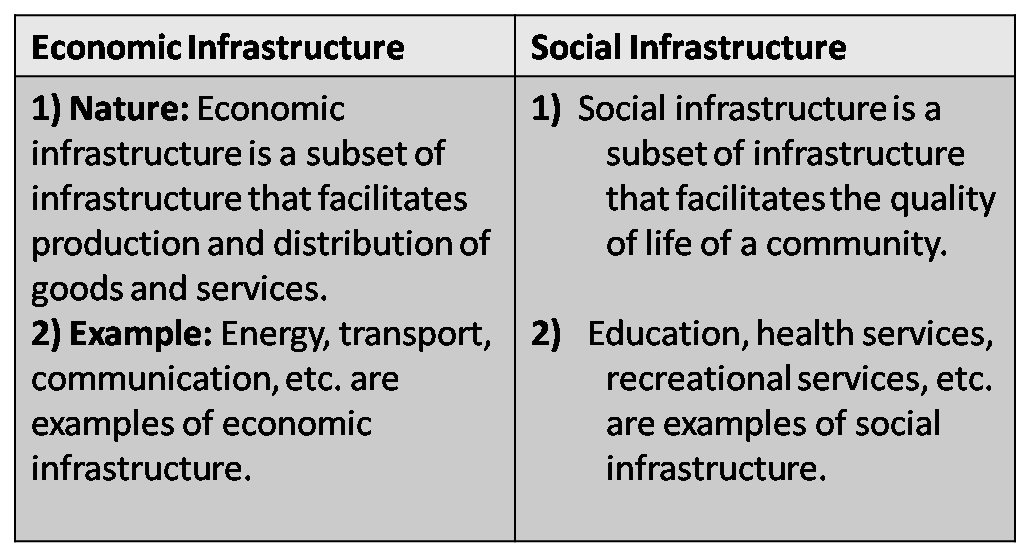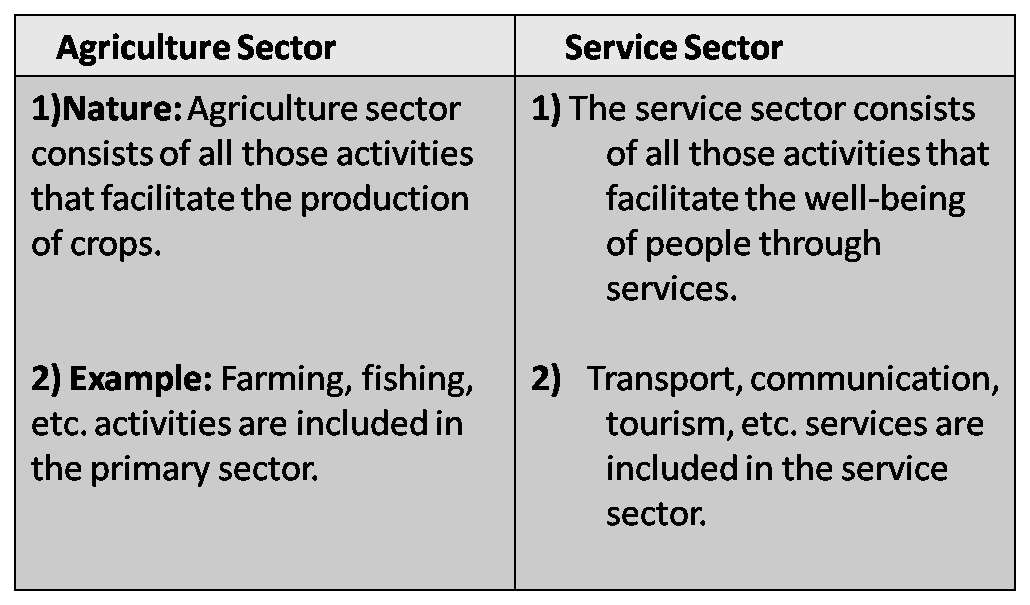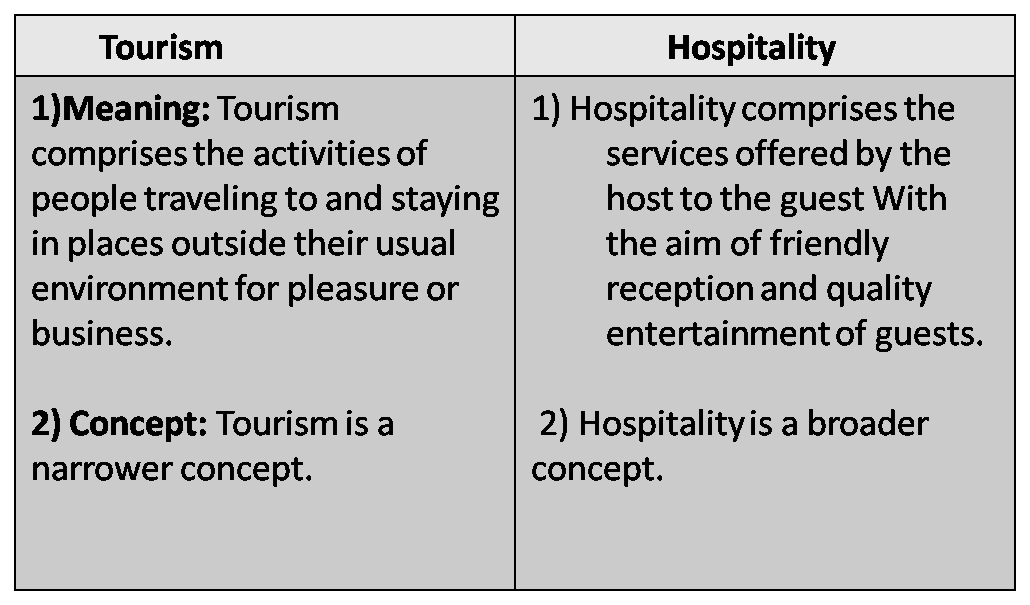Q. 1. Give economic terms :
1) Investments done by foreign companies in our country.
Ans: Investments have done by foreign companies in our country – Foreign Direct Investment (FBI)
2) Programme for development of small, medium and micro industries.
Ans: Programme for development of the small, medium and micro industries – Maharashtra State Industrial Cluster Development Programme (MSICDP).
3) Basic requirement for facilitating production and distribution of goods and services for economic development.
Ans: A basic requirement for facilitating the production and distribution of goods and services for economic development – Economic infrastructure.
4) Movement that promotes values of self-help democracy and equality.
Ans: A movement that promotes values of self-help democracy and equality – Co-operative movement.
Q. 2. Find the odd word out :
1. Agricultural Indebtedness, dry farming, lack of capital, engineering
Ans : Agricultural indebtedness, Dry farming, Lack of capital, Engineering – Engineering
2. Tourism, Banking, Automobile Production, Insurance
Ans: Tourism, Banking, Automobile production, Insurance – Automobile production
3. Pune, Hyderabad, Nashik, Nagpur.
Ans: Pune, Hyderabad, Nashik, Nagpur – Hyderabad.
4. MTDC, MAITRI, SEZ, MIDC.
Ans: MTDC, MAITRI, SEZ, MIDC – MTDC
5. Primary education, Hospitality, Higher education, Skill-based education.
Ans: Primary education, Hospitality, Higher education, Skill-based education – Hospitality
Q. 3. Identify and explain the concepts from the given illustrations :
1) To facilitate research in robotic technology, Japan has invested ` 1000 crores in India
Ans: Foreign Direct Investment.
Explanation of concept : Foreign Direct Investment (FBI) is an investment from/ by individual or firm in one country (home country) into a business in another country (host country).
2) Prajakta and her family visited the beaches during her eight-day Diwali vacation.
Ans: Tourism.
Explanation of concept : Tourism comprises the activities of people travelling to and staying in places outside their usual environment for pleasure or business.
3) Pravin from Latur works as a technician in the films division at Mumbai city.
Ans: Entertainment industry.
Explanation of concept : Entertainment industry is a part of the tertiary sector of economy Which includes a large number of sub-industries such as television, print media, films, etc.
Many employment opportunities are available in the entertainment industry.
4) Rani Gond from Chandrapur works as a hostess with the Mumbai-Goa cruise ship.
Ans: Hospitality.
Explanation of concept : The hospitality industry is a broad category of fields within the service sector of the economy that includes sub1ndustries/fields such as airlines.
cruise ship. hotels, restaurants, event management, etc. The hospitality industry mainly focuses on customers’ satisfaction.
Q. 4.Distinguish between :
1) Economic Infrastructure and Social infrastructure

2)Agriculture sector and Service sector.

3) Tourism and Hospitality.

4)Education and Health Services.

Q. 5.Answer the following :
1) Explain the role of Co-operative movement in Maharashtra
Answer :
1) The co-operative movement is the greatest contribution given by the state of Maharashtra to the country.
2) The co-operative movement is an effective instrument in the economic development of rural areas and improving the socio-economic conditions of people living in rural areas of Maharashtra.
3)Co-operative societies encourage the values of self-help, democracy, equality and solidarity among the members.
4)Initially, the co-operative movement in Maharashtra was confined mainly to the field of agricultural credit but subsequently,
it extended to other sectors such as agro – processing, agro marketing, sugar co-operatives, fisheries cooperative societies, co-operative dairy societies, textiles, housing societies, consumer stores, etc.
2) Explain in detail measures taken by the government for agricultural development of Maharashtra.
Answer :
The following are the measures taken by the government for agricultural development of Maharashtra
1) The government has opened centers to distribute good quality seeds at reasonable rates to the farmers.
2) The government has increased the number of outlets for fertilizer and pesticide distribution.
3) The government has paid attention to the development of irrigation facilities.
4) Through various schemes, the government has encouraged the Electrification of agricultural pumps and the provision of ‘electricity on demand’.
5) The government has started providing Financial assistance as per the requirements of farmers.
6) The government has set up Agriculture Produce Marketing Committees (APMC), established agro-export zones, horticultural training centers. grading and packing facilities for the effective distribution of agricultural produce.
7) The government has taken tremendous efforts in creating awareness about agricultural information. The government has used mass media for making agriculture a profit-making business.
3) Explain the major problems in the industrial sector of Maharashtra.
Answer:
The following are the major problems in the industrial sector of Maharashtra:
1)Delays in government procedures create problems at the starting of industrial units.
2)Opportunities for skill development are limited.
3)Many industries in Maharashtra use traditional technologies for manufacturing goods.
4)Lack of infrastructural facilities adversely affects the movement of raw material and finished goods.
5)Due to adverse conditions, new entrepreneurs are less motivated to run industrial units.
6)The regional imbalance is found In industrial growth. Industries are located mainly in few cities of Maharashtra.
4) Explain the measures taken to develop social infrastructure in Maharashtra.
Answer:
Measures were undertaken to develop SOCIGI Infrastructure :
Education : Education is considered as one of the basic human needs. It forms the backbone of the socio-economic development of any country. Education is a significant aspect of human resource development (HRD). In the present scenario, India is getting the advantage of the highest demographic dividend due to the maximum percentage of the young population in the country. Education, therefore, becomes ‘a priority’ at the national as well as state level. The state of Maharashtra has implemented various educational schemes to achieve the goal of education. There are four levels of education in our country.
1) Primary
2) Secondary
3) Higher Secondary
4) Higher education
1) Primary education : The state of Maharashtra has implemented the Right to Education (RTE) of children in the age group 6-14 years to provide free and compulsory education under the Sarva Shiksha Abhiyan (SSA). The expenditure of the State government on primary education was 119,486 crores during 2016-17.
Primary (Std. I to VIII) Educational Institutions and Enrolment
Economic Survey of Maharashtra 2017-18
2) Secondary and Higher Secondary Education : Rashtriya Madhyamik Shiksha Abhiyan (RMSA) was launched in 2009 with the objective to improve the access as well as the quality of secondary education. During 2016-17, the State government’s expenditure on secondary and higher secondary education was Rs.16,089 crores.
3) Higher education : Apart from the universalization of primary education, the Government of Maharashtra is taking efforts to Expand opportunities in higher education also. Higher education helps in creating technical and skilled human resources which is an important input necessary for overall economic development. There are 22 state universities, out of which 4 universities are for agriculture, one university for health science courses, one university for veterinary science, one for technology and 15 other universities for general courses. In addition to these, there are 21 autonomous universities, one central university, 4 private universities and 5 institutes of national importance in the state. To meet the challenges of liberalization, privatization and globalization, the state enacted the new Maharashtra Public Universities Act, 2016. The key focus of this Act is to promote academic autonomy and excellence, skill-based education through the democratic process in higher education.
Maharashtra is also the first state in the country to receive a RUSA grant of Rs. 20 crores under Research and Innovation and Quality Improvement for setting up innovation and technology transfer hubs. Rashtriya Uchchatar Shiksha Abhiyan (RUSA) is a centrally sponsored scheme launched by the Government of India in 2013.
4) Health Services : There were 1814 primary health centres and 360 community health centres in the state as on 31 st March 2017. Government of Maharashtra also emphasizes on programmes to strengthen the health system in rural and urban areas through the National Rural Health Mission (NRHM) and the National Urban Health Mission (NUHM). These programmes include health determinants like sanitation and hygiene, nutrition and safe drinking water. The Government of Maharashtra.
Q. 6.Read the following passage and the question given below:
Government of India has launched an ambitious programme of ‘Bharatnet’ for rural India by keeping in mind today’s modern era. More than one lakh rural (Grampanchayat) areas have been connected under Bharatnet high speed broadbrand scheme. Maharashtra has become the best performing state. East Uttar Pradesh, Chattisgarh, Rajasthan and Jharkhand have also been placed among the best performing states in the first phase of Bharatnet broad band connection scheme.
1) Why did the Government of India launch the Bharatnet project?
2) How many Grampanchayats have received the Internet service?
3) Which states have been placed as the best performing states in the first phase of Bharatnet?
4) ‘Internet has brought the world closer’ – Express your views on it.
Answer :
1) The government of India launched the Bharatnet project to provide internet facilities to rural regions of India.
2) More than one lakh Gram panchayats have received the internet service.
3) Maharashtra as well as Uttar Pradesh, Chattisgarh, Rajasthan and Jharkhand have been placed as the best performing states in the first phase of Bharatnet.
4) The Internet has played an important role in the exchange of information between people all over the world. It has helped in the development of business, the exchange of thoughts, sharing culture, etc. Thus, internet has brought the world closer.